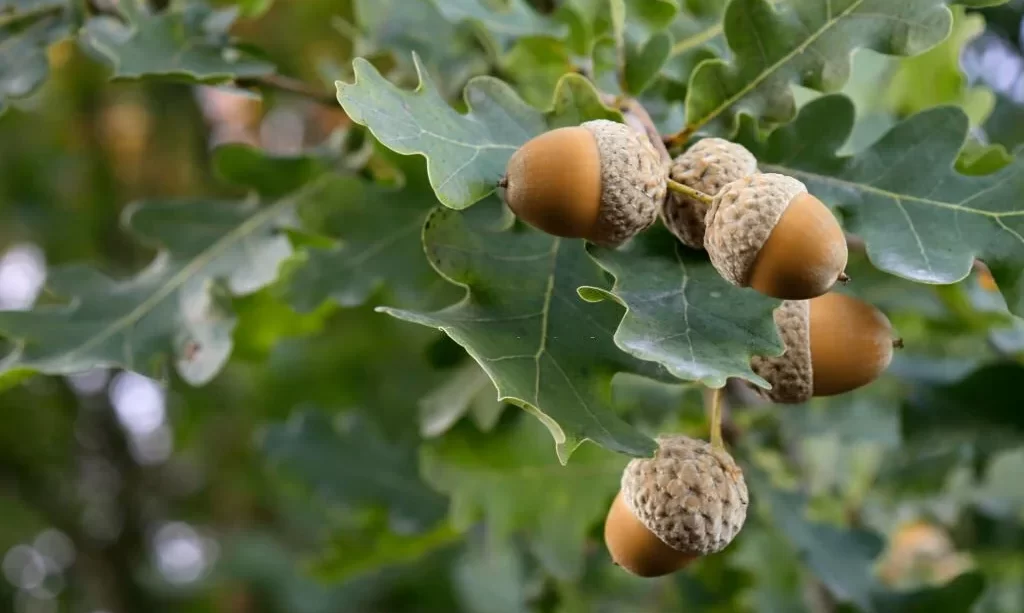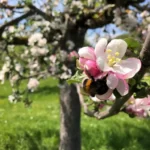In the quiet corners of forests, woodlands, and even urban parks, one can encounter nature’s miniature masterpieces: acorns. These unassuming seeds, the product of mighty oak trees, play a vital role in the life cycle of these towering giants. While acorns are celebrated for their significance in oak tree propagation and their role as a crucial food source for wildlife, they also beckon the curious with a question: What colors do acorns come in, and what influences their hues? In this exploration, we embark on a journey into the world of acorns, unveiling the intricacies of their coloration. As we traverse this natural landscape, we aim to reveal the palette that nature uses to paint these small but remarkable seeds.
- Grown in 2023 for the 2024 season
- 90% Germination
- There is nothing tastier (or more healthy) than baked squash. This variety is open-pollinated and very prolific. Acorn squash taste best if left on the vine until fully ripened. Flesh turns orange when stored for a week or more. 85 Days Latin Name: Cucurbita pepo
The Natural Palette of Acorns
Acorns are a testament to the subtle beauty that nature weaves into even the tiniest of her creations. Typically, these diminutive seeds display a natural palette of earthy and subdued colors. Shades of brown, ranging from light tan to dark chestnut, are most commonly associated with acorns. The maturity of the acorn, as well as the oak tree species, significantly influences their color. Young, unripe acorns often exhibit shades of green, signaling their immaturity and unreadiness for growth.
These natural colors serve a functional purpose in the life of acorns. Brown and green hues help them blend seamlessly with the forest floor, providing camouflage from potential predators and ensuring their safe journey from seed to sapling. However, acorn coloration isn’t solely determined by the stage of development. Environmental factors and local conditions also play a vital role in shaping the colors of these small seeds.
The Impact of Environmental Factors
Environmental conditions can exert a profound influence on the coloration of acorns. Factors such as the type of soil in which they grow, the amount of sunlight they receive, and the presence of tannins all contribute to the spectrum of colors that acorns can display. The tannins in particular, naturally occurring compounds found in oak trees, can impact acorn color. Tannins often provide a slightly reddish or yellowish tinge to acorns.
In the oak tree’s diverse habitat, variations in acorn color are not uncommon. Depending on the specific location and climate, acorns may develop different shades. For instance, acorns from oaks growing in sandy soils might be lighter in color, while those from trees in loamy or clay-rich soils may have darker hues. Understanding the interplay between these environmental factors and acorn color adds an extra layer of appreciation for the subtleties of nature’s design. As we continue our exploration, we’ll uncover the less common colors and varieties that acorns can exhibit, unveiling the intriguing world of these diminutive seeds.
- Harvest in about 70 days
- Seeds are Non-GMO easy to grow and hand packed by David’s Garden Seeds in the United States
- A splendid single sized squash bright golden yellow color and shaped resembling an acorn winter squash
- Wonderful ornamental uses as well as front porch decorations
- Germination rate about 80% or better
Uncommon Acorn Colors and Varieties
While the natural palette of acorns predominantly consists of earthy tones like browns and greens, there are instances where these diminutive seeds don less conventional hues. Some rare acorns stand out with colors that range from shades of red and orange to striking multicolored patterns. These atypical colors often draw the attention of observers, prompting questions about their origins and significance.
Unusual acorn colors can be attributed to a variety of factors, including genetic variation within oak species, environmental anomalies, or even the presence of particular minerals in the soil. These deviations from the norm are a testament to the diversity and adaptability of nature. Though less common, these colorful acorns add a layer of fascination to the world of oak trees and their tiny offspring. Understanding the factors that contribute to these unique colors provides insight into the complexities of nature’s artistic expression.
The Significance of Acorn Color
The colors of acorns, whether conventional or unusual, play a crucial role in the life cycle of both oak trees and the creatures that rely on them. For animals such as squirrels, acorn color serves as a vital cue when gathering and storing these seeds for winter sustenance. The visual contrast of acorns against the forest floor allows these diligent foragers to locate and hoard these precious food sources, contributing to the survival of the oak species.
The significance of acorn color extends beyond wildlife interactions. It is intimately tied to the reproductive success of oak trees. As acorns drop to the ground and gradually lose their vibrant green color, they signal their readiness to germinate and establish new oak trees. Their ability to blend with their surroundings during this crucial phase ensures their safety and the continuation of the oak species.
Conclusion
In the small and unassuming form of an acorn, we discover a canvas painted with a myriad of colors, both familiar and extraordinary. The colors of these tiny seeds are not just a matter of aesthetics; they are a reflection of the intricate interplay between oak trees and the natural world that surrounds them. The typical browns and greens of acorns provide the camouflage necessary for survival, while rare and uncommon colors add a touch of wonder to our observations.
These colors serve as nature’s silent cues, guiding wildlife in the quest for sustenance and facilitating the propagation of oak trees. The subtleties of acorn coloration remind us of the beauty and complexity found in even the smallest aspects of the natural world. As we marvel at the various hues that adorn these miniature masterpieces, we come to appreciate the depth and diversity of life’s design, hidden within the palm of our hands.





